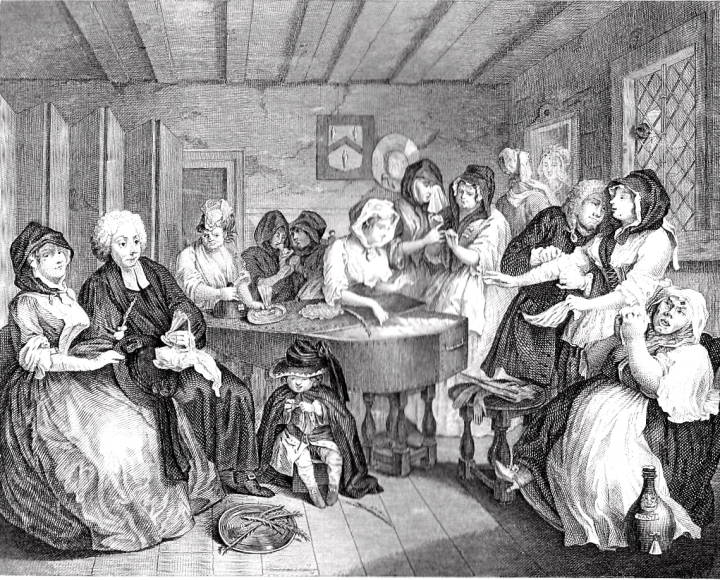‘The Great Social Evil’ is a well-known controversial topic of the 19th century. Having to do with prostitution and domestic morality, this time period became known as ‘The Great Social Evil’ as it was believed that prostitution was an immoral act that should not be a part of society. However, if this is the thought, then why and how did it become a part of the 19th century? How did it affect women and the different social classes?
The Great Social Evil owes its origins to the French Revolution and its demoralizing effects (Shaw). The 19th century saw the greatest rise in number of social problems predominantly among the rising middle class and this time was among one of the hardest for women. Women worked less favorable jobs and extremely long hours with low wages in jobs such as domestic servants, needle-trades, factory workers, and agricultural gangs and it was due to this, that they increasingly turned to prostitution (Shaw).
However, the perception of the harlot was one of great controversy for those of the times. In fact, for every one woman that was poorly-dressed and of a lower social class among the prostitutes, there were three women that were of a higher social class and a prostitute (Shaw). So while the conception is that many women are of a poor standing and highly diseased, harlots of the time were actually well taken care of and “generally pretty and elegant” (Shaw).

The Harlots Progress by William Hogarth (1697-1764)
Even though, many were quite attractive and well-kept, Oscar Wilde was unsure of how to perceive them. In Oscar Wilde’s poem “The Harlot’s House”, people of a whore house are depicted as “strange mechanical grotesques”, “ghostly dancers”, “slim silhouetted skeletons”, “phantom lover” (Wilde). Wilde seems unsure of how to describe them. They are a mix between skeletal and lovers. They play a song of love but are grotesque. Wilde seems split between love and lust, “love passed into the house of lust”. His own love leaves him and walks into the harlot’s house. This suggests that while prostitution is grotesque and immoral, there is something about it that fascinates and draws him and his lover in.
Another example arises when looking at Arthur Symons “La Melinite: Moulin Rouge”. The women are described as performing a “Waltz of Roses” but they have “mirrored, morbid grace”, “Her morbid, vague, ambiguous grace”. The female “dances in a dream…in the mysterious night, she dances for her own delight, a shadow smiling back to a shadow in the night.” (Symons). The poem is one of happiness and seems almost like a fairytale; however, parts of it are morbid and dark. While the girl dances, she dances “in ruddy flowers of flame that burn”. The woman is depicted as beautiful and graceful, while morbid and dark at the same time. She is a shadow that is looking back at herself as a shadow. She is dancing about, but yet, in a flower that is flaming. Symons describes them as something that is beautiful performing in something that is disgraceful.
Prostitution has its origins in the 19th century due to the hardships brought onto the middle and lower classes after the French Revolution. While some were unsure of how to fully interpret the Great Social Evil, a majority of society agreed that it was immoral and should not have been an option for women. Several pieces of legislature were also passed even to help deal with such issues, such as the Contagious Diseases Act of 1864, 1866, and 1869. It was a gravely demoralizing and dehumanizing time for women that they should not have had to resort to.

England’s occupation of Inda in the late 18th and early 19th century
Weiss, Zoe. “Love, Lust, and Lies in “The Harlot’s House” by Oscar Wilde .” Victorian Web. (2009): n. page. Web. 30 Sep. 2012
Shaw, Rhianna. “The Great Social Evil: “The Harlot’s House” and Prostitutes in Victorian London.” Victorian Web. (2010): n. page. Web. 30 Sep. 2012.
Wilde, Oscar. “The Harlot’s House”. Victorian Web. n. page. Web. 30 Sep. 2012
Symons, Arthur. “La Melinite: Moulin Rouge”. Google. n. page. Web. 30 Sep. 2012
